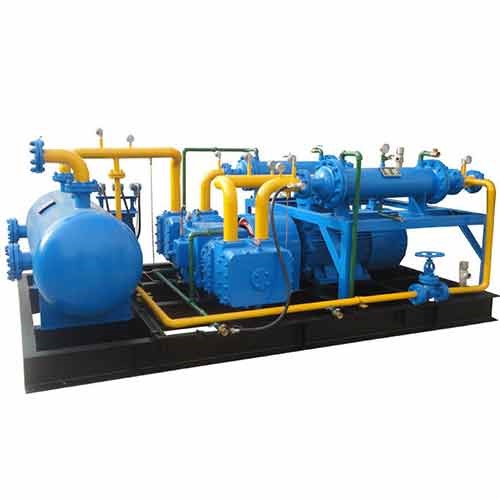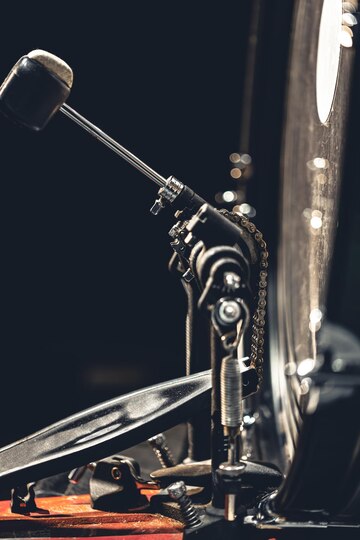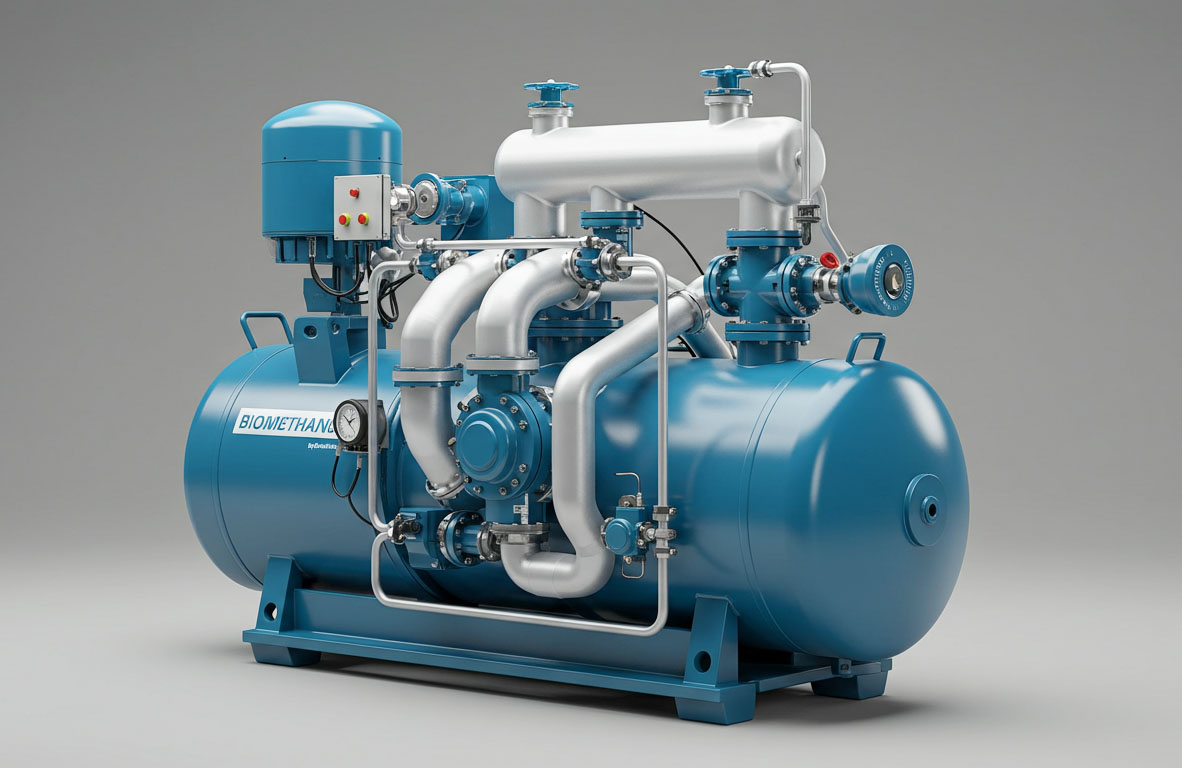Industrial Gas Compressor Types: Complete Guide 2024
Industrial Gas Compressor Function:
Function of Gas Compressors
The primary purpose of Gas Compressor Industrial is to decrease the volume within which a gas is set, they increase its pressure. Point 3 – An innocent-looking philosophy with extensive application Compressed gases are used to operate machinery, drive fluids through pipelines, and assist in some manufacturing and industrial processes. Our everyday conveniences; from working hard to keep us cool in the summer, and fueling our homes with natural gas for heat.
Types of Gas Compressors
Gas compressors revolve around two key types: positive displacement and dynamic. Different mechanisms are used to increase the pressure in each category
Positive Displacement Compressors – These compress the specific volume of gas in a chamber, then decrease the space allowing the pressure to rise. All positive displacement compressors can be one of two types:
Rotary Compressors: These operate rotating mechanisms to compress the gas. Common types include:
Screw compressor: It consists of two intermeshing screws that trap the gas and compress it.
Lobe compressor: For example, lobe alternatives to compress efficiently air for material conveying.
Liquid ring compressor: Uses a rotating liquid ring to compress gas (commonly used as a vacuum pump).
Scroll compressor: Uses interlocking spiral vanes for gas compression.
Vane compressor: Compress the gas by changing the spatial volume of working chambers via exploiting sliding vanes in a slotted rotor.
Reciprocating Compressors: These depend on a piston that moves in and out of the cylinder to compress the gas. It provides a high-pressure duty pump, typically for air separation and natural gas distribution.
Diaphragm compressor: a variation of the reciprocating or piston compressors with back sides liquid sealed, usually oil.
Single Acting & Double-acting Compressors
Single-acting compressor: Compression only on one side of the piston during its stroke.
Double-acting compressor: Compression is done on both sides of the piston as it moves back and forth making this more efficient.
Dynamic Compressors
Dynamic compressors are the opposite of positive displacement as these do not hold or trap gas. For this same reason, they spin up the gas to faster velocities but still are using one set of rotating vanes which turns that kinetic energy into a pressure rise.
Centrifugal compressor: Centrifugal (radial) has a high-speed rotating impeller that separates the gas into smaller volumes and accelerates it outward, similar in design to the upper half of common types of cooling tower fans; good for low pressure–high-volume applications.
Axial compressor: Through the use of airfoils it generates compression by controlling gas flow parallel to a rotating shaft. They are well suited to applications requiring high-pressure ratios.
Mixed-flow compressor: Here, centrifugal and axial designs are mixed to create a balance between the flow rate of an axial and the pressure capabilities of a centrifugal compressor.
Deep Dive into Compressor Types
When selecting an industrial gas compressor, it is important to know the various types before choosing one that will work best for your requirements. This part looks at in detail every category including the way they work, advantages and disadvantages as well applications most used with these.
Positive Displacement Compressors
The principle of operation for positive displacement compressors is simple – they capture a fixed volume of gas in the chamber and then reduce void to move closer together air molecules, increasing pressure. This makes for very fine pressure control.
The Workhorses of Positive Displacement
Rotary types find the favour of people owning small homes as they keep on working and handling all kinds of gases. Common types of rotary compressors in closer detail.
Screw Compressor: Think of two screws that work together to form something like gear threads. The screws rotate and the volume of gas trapped between them is gradually reduced, which compresses the gas. These compressors are extremely efficient, highly reliable and capable of high-pressure applications. It is utilized in air compressors, plastic manufacturing and natural gas transportation.
Lobe Compressor: These are the lobed or “Roots” type compressors, their rotors meshing on each other. The lobes compress the gas trapped between them as they turn. Lobe compressors are simple in design and have a high flow rate, allowing for quieter operation. Some of their common applications include pneumatic conveying makes use and sewage treatment plants.
Liquid Ring Compressor: This novel design consists of a rotor that turns in an enclosed cylindrical chamber which is partly submerged with liquid where generally water is used for this purpose. A ring of the liquid flows around the chamber as centrifugal force pushes it outwards. This gas, trapped between the impeller and liquid ring can be compressed as volume decreases.
Liquid ring compressors are recommended for use when handling wet or liquid gases and vacuum operation is required. Such devices are common in the chemical processing industries and for wastewater treatment.
Scroll Compressor: That chained-scroll design has two interlocking spirals that fit like a snail shell. The air or refrigerant trapped in the gas pockets is caught as scroll scrolls are rotated reducing volume each turnover results in compression. Scrolls work in compact size, quiet running, and high efficiency. They are even employed in normal households, air conditioners, refrigerators, and small-scale industrial applications.
Vane Compressor: Oil-free Air Compressors- These compressors make use of a slotted rotor with sliding vanes. At the rotor turns, their vanes move in and out of slots capturing gas which is compressed while volume reduces. Vane compressors have an uncomplicated design and range of pressures that they can pressurize. But they may also need lubrication and are less efficient than certain other rotary compressor types. They are frequently applied in devices such as air compressors, machinery for sandblasting, and food processing equipment.
Reciprocating compressors Working Principle
How Reciprocating Type Work: Reciprocating compressors (like a car engine) use a piston that moves back and forth in a cylinder to compressor gas. The type XX – is presented in this article as a 42mm automatic chrono (their old references read like nuclear code numbers) with high-pressure capabilities suitable for any number of applications.
Diaphragm Compressor: In the case of a simple reciprocating compressor, the diaphragm type uses a contrarily flexible membrane in place of the piston. This concept eliminates the need for lube and is well-suited to clean, oil-free compressed air applications. Diaphragm compressors are popular for medical applications, food & beverage and analytical instruments.
Single-Acting vs. Double-Acting Reciprocating compressors
The main difference is how the piston uses that space within a cylinder.
Single-acting compressor: The piston travels only one way, to and from with compression on just one pass While this design might be simpler, it is also less efficient.
Double-acting compressor: The higher efficiency is achieved by using compression on both sides of the piston as it moves back and forth. For tough applications, double-acting compressors are the way to go.
Dynamic compressors
Dynamic compressors, on the other hand… Gas is not trapped, but its speed is increased by high-speed rotating impellers. Then, losing its kinetic energy and speeding up due to the convergent section of the nozzle converts this pressure into rise.
Centrifugal Compressor: Think of how the propeller in a fan would work. The design of centrifugal compressors utilizes rotating impellers which decrease the gas pressure by accelerating it outwards. Pressure is created by converting its kinetic energy (velocity) into pressure as the gas leaves the blade passages of the impeller.
Axial Compressor: These use a shaft with multiple airfoils attached to it and similarly positioned fixed stator airfoils. As the shaft rotates, the airfoils further accelerate gas. This is a good strategy to attain high pressure ratios. Jet engines, gas turbines and high-pressure air separation plants all use an axial compressor.
Mixed-Flow Compressor: Mixed-flow compressors, as might be guessed from the name are a hybrid design incorporating features of both centrifugal and axial designs. The two most common types are based on the same principles but use multiple rotating impellers and airfoils to balance between high flow rates of centrifugal compressors, which output low-pressure gas per stage similar in configuration as an axial fan or pump.
Applications that need moderate pressure ratios coupled to relatively large flow rates are well-served by mixed-flow compressors. They are applied in aircraft engines, high-performance industrial turbines, and to a degree also in some natural gas pipelines.
How to Select the Right Industrial Gas Compressor?
Several factors regarding selecting the right compressor for an application have to be seriously analyzed, they are listed as follows:
Pressure requirements: What final pressure of the gas is desired?
Flow rate: How much gas shall be compressed per time slot.
Gas type: compressor Selection based on properties of gas being compressed
Application demands: The industrial process will define the type of compressor suitable for particular requirements.
Efficiency: Perhaps the one compressor type may be favored by the preferred level of energy efficiency.
Oil-Injected Versus Oilless Compressors
Related: Oil-lubricated vs. oil-free compressor Oil-lubricated compressors oil injected to reduce friction and wear inside the compressor mechanism. However, there might be some issues with that as the compressed air contains oil residues which is not suitable for every application such as food and beverage processing or medical use. This eliminates the concern of oil-based contamination but also introduces a requirement for materials that might be more expensive and less efficient.
Conclusion
Industrial gas compressors are vital for various applications, from powering machinery to driving processes in many industries. Understanding the two main types – positive displacement and dynamic – along with their functionalities and considerations for selection empowers you to choose the right compressor for your specific needs. Explore Gas Compressor Industrial, Its features, and benefits will amaze you.
Read More: Selecting the Right Gas Compressor LPG: A Buyer’s Guide (2024)


